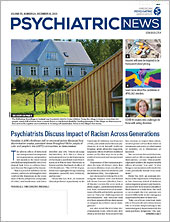The COVID-19 pandemic and its associated lockdowns have brought with them a spate of challenges for patients who have eating disorders by disrupting routines, increasing social isolation, putting diet and weight front and center in the news and social media, and introducing stressors such as videoconferencing, according to researchers in the field.
“Soon after the pandemic started, we started seeing an increase in calls to our intake line. Within a few weeks the numbers were up 30%,” said Cynthia M. Bulik, Ph.D., the founding director of the University of North Carolina Center (UNC) Center of Excellence for Eating Disorders. She is also the Distinguished Professor of Eating Disorders in the Department of Psychiatry at the UNC School of Medicine.
Alarmed by the trend, Bulik and her colleagues developed an online survey to study the concerns and challenges that people with eating disorders face with regard to their disorders and their general mental health during the pandemic. Their study, which included more than 1,000 people with eating disorders in the United States and the Netherlands, was published in the International Journal of Eating Disorders. Among survey respondents, 79% of those in the United States and 66% of those in the Netherlands reported being concerned about their eating disorders worsening because of a lack of structure in their days.
“Recovery from an eating disorder often requires clear structuring of meals and snacks—in anorexia to ensure adequate intake and in bulimia and binge-eating disorder to re-establish a healthy regular eating pattern,” Bulik told Psychiatric News. “With none of the typical time markers that we have during the day, such as getting up, getting dressed, and commuting to work—all of which we build our recovery eating plans around—suddenly the daily scaffolding has disappeared, and the kitchen is always right there.”
Changes in access to food also presented a challenge to the respondents, particularly in the beginning of the pandemic. Those with anorexia reported increased restriction in their eating and fears about being able to find appropriate foods.
“[They] were incredibly anxious that they would not be able to get ‘safe’ foods or foods consistent with their meal plans. They were not able to spend a lot of time in grocery stores looking at labels, and they were very concerned about shopping online,” Bulik said.
Those with bulimia and binge-eating disorder reported increases in their binge-eating episodes and urges to binge.
“A common strategy to control binge eating is to keep high-risk foods out of the house. Yet we were being told by the authorities to keep supplies on hand. Many reported binge eating on stockpiled foods and then feeling extremely guilty because they could have compromised the health and well-being of their roommates or family members,” Bulik said.
Changes in living arrangements can also present a challenge to patients who have eating disorders. In a study of 129 people with eating disorders in the United Kingdom published in the Journal of Eating Disorders, more than 20% reported a change in their normal living situation because of the pandemic. Among those, 85% said that the change had worsened their symptoms. They reported multiple reasons for this, including increased interpersonal stress, increased scrutiny and/or pressure from others to eat more, and a loss of control over what they ate (such as when other people in their households cooked meals, and the respondents could not be sure of the ingredients in the food).
In the same survey, more than 86% of respondents reported feeling more social isolation during the pandemic, and more than 81% reported spending more time online. Yet spending more time online increased their exposure to triggering messages, such as social media posts that referred to diet, weight, and exercise.
“The internet has played a positive role for many individuals during the pandemic, including providing a valuable source of social support and connectedness. However, it can be detrimental if individuals find themselves exposed to online content that they find triggering of their eating disorders,” study co-author Dawn Branley-Bell, Ph.D. (C.Psychol.), told Psychiatric News. She is a health and cyber psychologist at Northumbria University in Newcastle upon Tyne, England.
“Some of our respondents reflected on the constant public dialogue on social media about ‘daily exercise’ and weight gain during the COVID-19 pandemic and associated lockdown,” Branley-Bell added. “This suggests that mental health professionals might wish to investigate strategies that patients could use to monitor and potentially regulate their internet usage if it is proving problematic and if providing this regulation does not impact upon positive aspects of internet use such as access to social support.”
Technology presents another challenge to patients with eating disorders, including the technology used for telehealth appointments.
“The individuals in our study raised concerns around the suitability of videoconferencing software, which often meant they were faced with seeing themselves on the monitor during the call. Our participants explained how this could exacerbate their self-awareness and self-criticism, which could worsen their eating disorder symptoms or have a negative impact on their recovery progress,” Branley-Bell said.
“Health professionals may wish to use technology that does not have self-view enabled as the default option, or alternatively provide guidance on how their patients can disable self-view on their devices. If patients are uncomfortable with video calls, they may wish to investigate whether there are other options available for remote treatment, such as audio calls,” she added.
Bulik and other mental health professionals at UNC have made turning off self-view an option for their patients.
“One of the things that we’re doing for group meals and for monitoring meals is that patients can turn off cameras so they don’t have to see themselves, but the therapist can see what they’re eating,” she said. “It’s important to see what the patient looks like, as there are visual cues that we use to fuel treatment and psychotherapy.”
However, patients with eating disorders should not be forced to enable video at other times, such as for work or with friends, and psychiatrists should be prepared to support their patients in this matter, Bulik said. “A doctor’s note for not turning on video is completely appropriate.”
Respondents in Branley-Bell’s study expressed two main concerns about the future. First, they were worried about adjusting to a “new normal” once the pandemic ends, such as re-adapting to social and public situations, including dining out and grocery shopping. Second, they had concerns about recovering from eating disorder behaviors that became worse during lockdown.
“Health care services need to ensure that adequate, accessible support is readily available during and after the pandemic, including plans to help individuals during the transition out of lockdown,” she said.
Neither Bulik nor Branley-Bell reported outside funding for their studies. ■
“Early Impact of COVID‐19 on Individuals With Self‐Reported Eating Disorders: A Survey of ~1,000 Individuals in the United States and the Netherlands” is posted
here.
“Exploring the Impact of the COVID-19 Pandemic and UK Lockdown on Individuals With Experience of Eating Disorders” is posted
here.

